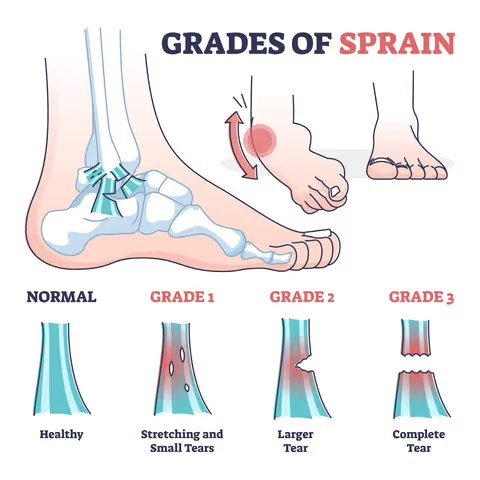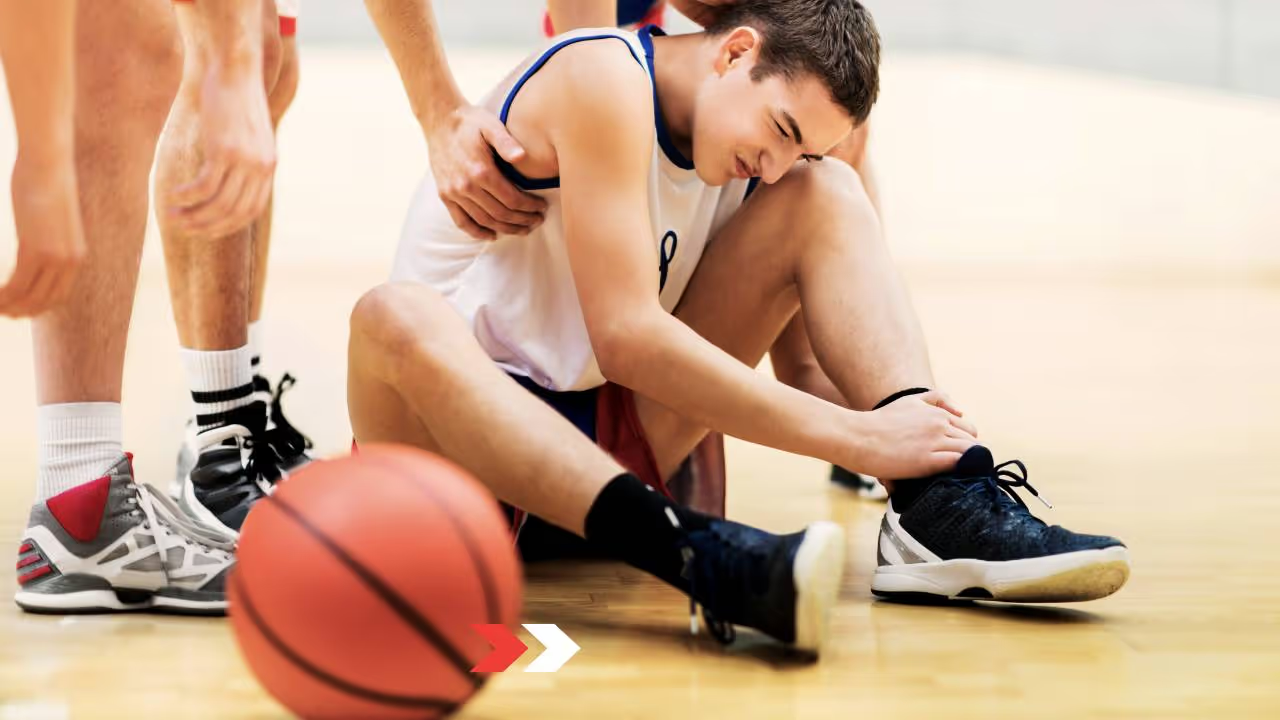With March Madness quickly approaching, we want to highlight some of the most common basketball injuries affecting the lower body along with some tips and tricks for prevention.
Basketball is a high-intensity sport that demands quick movements, jumps, and cuts. It is a sport where lower extremity injuries are quite common. These injuries can range from minor sprains and strains to severe fractures and ligament tears, which can keep the players off the court for weeks or even months. In this post, we will discuss the three most common lower extremity basketball injuries and how to prevent them.
1.) Ankle Sprains
Ankle sprains are the most common basketball injury, accounting for almost HALF of all basketball-related injuries. They occur when the ligaments that hold the ankle joint together are stretched or torn due to a sudden twist or turn of the foot. Ankle sprains can range from mild to severe, and the symptoms may include pain, swelling, bruising, and difficulty walking.

Basketball players are at a higher risk of ankle sprains due to the constant jumping, landing, and sudden changes in direction required by the game. Factors that increase the risk of ankle sprains include:
- Poor footwear: Basketball shoes with good ankle support and traction are essential for preventing ankle sprains.
- Weak and/or unstable hips and ankles: Players with weak hip and ankle muscles that act as stabilizers are more likely to suffer an ankle sprain.
- Lack of flexibility: Players who do not warm up properly before games and practices are at a higher risk of ankle sprains.
2.) Knee Injuries
Knee injuries are also common in basketball, with ACL (anterior cruciate ligament) tears being the most common. The ACL is a band of tissue that connects the thigh bone to the shinbone. It stabilizes the knee joint by preventing excessive forward movements of the shin bone and limiting rotational knee movements. ACL tears occur when the knee is twisted or bent forcefully, often during jumping, landing, or sudden changes in direction. Other common knee injuries include meniscus tears and patellar tendinitis, which is inflammation of the tendon that connects the kneecap to the shinbone. Factors that increase the risk of knee injuries include:
- Poor footwear: Shoes with insufficient support or traction can increase the risk of knee injuries.
- Decreased hip and thigh strength/stability: Players with weak hip and leg muscles are more likely to suffer knee injuries.
- Overuse: Players who play basketball frequently and do not rest enough are more prone to overuse injuries like patellar tendinitis.
3.) Achilles Tendinitis
Achilles tendinitis is a common overuse injury that affects basketball players of all skill levels. This condition is caused by repetitive stress on the achilles tendon, which can lead to inflammation, pain, and limited mobility. Basketball players are particularly susceptible to achilles tendinitis due to the high-intensity movements involved in the sport, including jumping, running, and sudden changes in direction. These movements place a significant strain on the Achilles tendon, which can lead to microtears and damage over time. Factors that increase the risk of achilles injuries include:
- Decreased hip and ankle strength/stability: Players with weak glutes as well as weak calves (gastrocnemius and soleus) are at increased risk.
- Decreased gastrocnemius and soleus muscle length: There are two muscles that make up the “calf” , proper muscle length in both muscles is key to proper achilles function
Here are some of our favorite tips for basketball players to reduce the likelihood of injury:
- Perform a dynamic warm up before games and practices to increase flexibility and range of motion: Walking forward lunges and lateral lunges, walking single leg deadlift, line hops (forward/lateral), squat jumps, alternating lunge jumps
- Strengthen the hip and ankle muscles by doing exercises like: calf raises (gastroc and soleus bias), bulgarian split squats
- Perform dynamic balance exercises: Single leg balance with 3 way taps, SL DL, SL DL + KB pass through
- Practice proper landing and jumping techniques, focusing on limiting your knee from caving in and arch from collapsing: box jumps, single leg box jumps, landing from a box, lateral skater hops
- Rest and recover between games and practices to prevent overuse injuries.
Stay tuned for more March Madness tips this month.
Thanks for reading!
In good health,
Dr. Eliza Cohen, PT, DPT, CPT, NTP
Conquer Movement - Wilmington, NC

